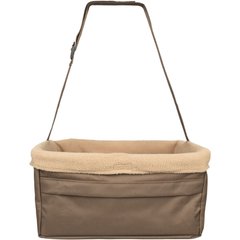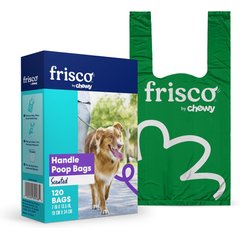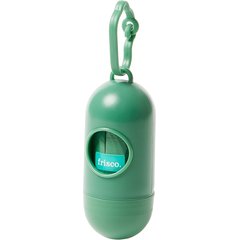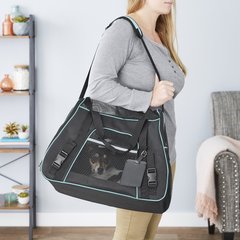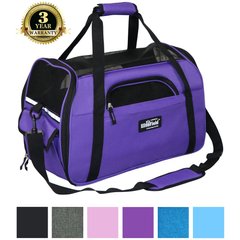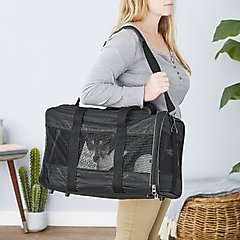How To Travel With a Dog Anywhere, According to Experts

Photo by iStock.com/Bogdan Kurylo
Whether it’s reconnecting with family across the country or exploring an exotic new locale, there’s a good chance you’re already dreaming of your next trip away from home. But what are you supposed to do about your trusty canine companion?
The good news is that pet travel has never been easier. From hotels and airlines to restaurants and tour companies, dog-friendly travel is on the rise. So if you’re ready for a getaway with your pup by your side, read on—we’ve got everything you need to know about how to travel with dogs this holiday season.
How To Prepare for Dog Travel
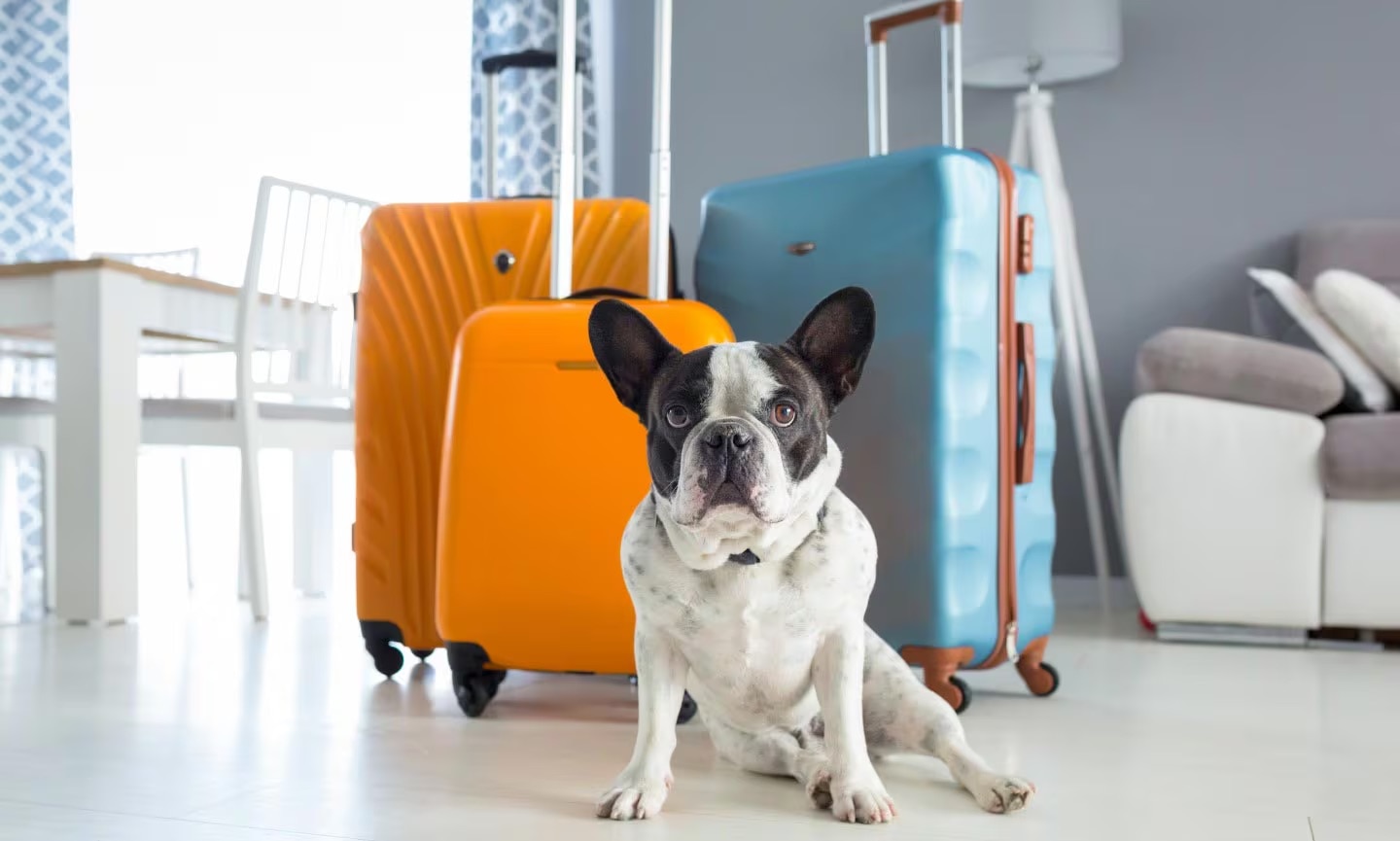
Photo by iStock.com/Patryk_Kosmider
1. Talk to Your Veterinarian
Is your dog healthy enough to travel? Are they up to date on all their necessary vaccines? Is their microchip still in place and scannable? Check in with your veterinarian before finalizing your travel plans, and if your dog is due for a checkup, schedule it before you leave.
2. Pack Your Pup’s Medical and Vaccine Records
Health certificates and records of your pet’s rabies vaccination and other shots will come in handy if your dog needs medical care while you’re traveling. Plus, entry requirements for another country may require you to have these documents in order to cross the border with your pup.
3. Update ID Tags and Microchip
In new surroundings, it’s easy for dogs to get lost. We know you’ll take every precaution to keep your pup by your side, but just in case you should become separated, make sure their ID tags have your current contact information on them and that your dog’s info is up to date with your microchip company too.
4. Carry Their Food, Treats, and Medications With You
When it comes to essentials like food and medicine, it’s best to carry supplies with you rather than packing them in checked luggage, just in case your suitcase goes missing. Having treats handy is helpful for a different reason: encouraging your dog to behave in new, exciting surroundings!
5. Pack Their Favorite Things
For dogs, traveling to a new place can be exciting—but also a little stressful. Familiar items from home can soothe their nerves, so toss some favorite toys, their bed, or a special blanket into your suitcase.
6. Plan Their Potty and Exercise Breaks
Traveling with a dog is a lot like traveling with a small child: Both need frequent potty breaks and opportunities to run and play. If you’re driving, look for dog-friendly rest stops along your route. Before flying, find out where your dog can relieve themselves at your departure and arrival airports. Either way, a supply of dog poop bags is essential.
7. Keep Them Hydrated
Dogs need access to water whether they’re traveling or not—and refusing water can lead to dehydration. Pack a travel bowl, and let your pet drink during breaks.
8. Pack Calming Products
Is your pet a nervous traveler? Talk to your veterinarian about sedatives or other safe medications or supplements to calm their nerves while you’re en route.
9. Keep ’Em on a Leash
Whether you’re on an international travel adventure, road-tripping across the country, or navigating an airport, it’s important to keep your furry companion on-leash at all times. New places can be exciting and distracting for dogs—even those who can be trusted to roam off-leash at home. Keeping your dog on a leash while traveling ensures they stay by your side.
Traveling With Dogs by Car

Photo by iStock.com/mixetto
1. Take Practice Trips
If your dog isn’t used to car travel, start small. Before your long haul, take short practice drives with your dog. Make sure to end your drive somewhere fun, like the dog park or a favorite store—that’ll teach them that spending time in the car is a good thing!
2. Secure Your Pup
You rely on your seat belt to protect you in case of an accident. Doesn’t your dog deserve the same protection? Make sure your pup is secure whenever you’re driving. The Center for Pet Safety® has recommendations for dog seat belts and car seats.
3. Fight the Fur
Dogs can be messy, so some advance backseat prep can save you hours of cleaning after your trip. A car seat cover can keep your dog’s fur, drool, potty accidents, and more from putting a dent in your car’s resale value.
4. Exercise, Exercise, Exercise
A tired dog is a happy dog, so make sure to give your pup lots of playtime before your trip, and stop often along the route so they can get their zoomies out. Physical activity can help dogs manage any anxiety they’re feeling about the trip—and just might result in a peaceful mid-drive nap.
5. Never Leave Your Pup Unattended
Do not leave your pet unattended in the car, even if the windows are cracked open. “This does not provide adequate temperature control for your pet and can result in life-threatening situations, such as heatstroke,” says Natalie Brejcha, DVM, a veterinarian at Noah’s Animal Hospitals in Indianapolis, Indiana.
6. Pack the Necessities
At minimum, your dog will need water and a vessel to drink from on your journey, and if you’re traveling during their usual mealtimes, you’ll need to provide food as well. A few favorite toys will help keep them busy during long stretches on the road. And, of course, don’t forget the poop bags—picking up after your pup at rest stops is the responsible thing to do.
Recommended Products
Traveling With Dogs by Plane
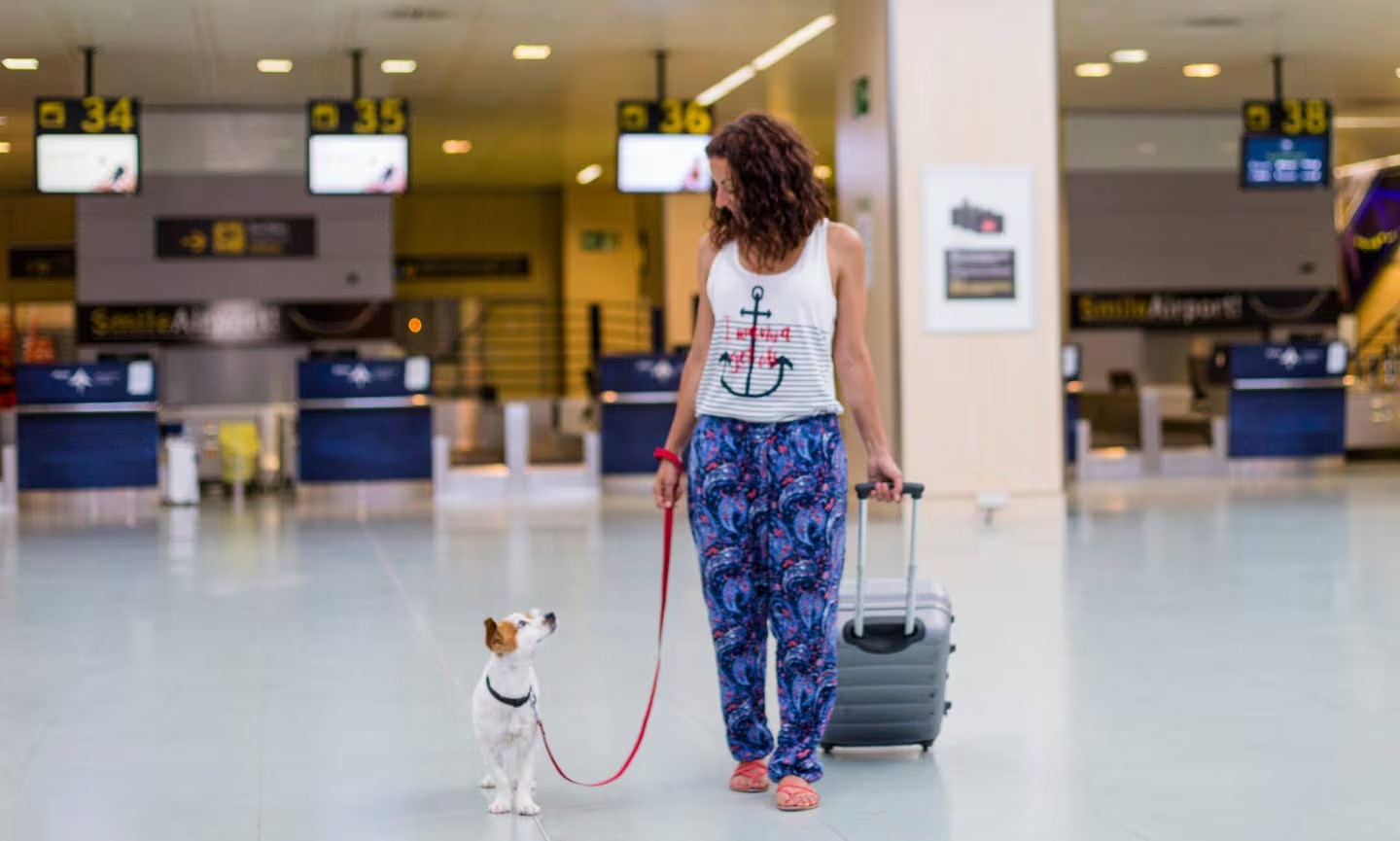
Photo by iStock.com/Eva Blanco
Is My Dog Allowed on the Plane?
Many airlines have dog-friendly pet policies that allow you to bring your pup with you in the cabin of the plane. However, every airline has a different set of rules, so it’s important to confirm in advance that your airline allows dogs.
Regulations change frequently, so for the most up-to-date information, ask your airline directly. Also note that international flights often have additional rules and regulations in place for pets, so call your airline ahead of time to ask about their specific requirements.
Service Animals vs. Emotional Support Dogs
Airlines are required to allow service animals to fly with their pet parent in the plane cabin, except in cases where the animal violates safety requirements, poses a threat to other passengers, causes significant disruption, or violates health requirements.
Service animals are not the same as emotional support animals. The U.S. Department of Transportation defines service animals as “a dog, regardless of breed or type, that is individually trained to do work or perform tasks for the benefit of a qualified individual with a disability, including a physical, sensory, psychiatric, intellectual, or other mental disability.” Unlike emotional support animals, service animals and their pet parents are protected by the Americans with Disabilities Act (ADA).
Required Paperwork
Some airlines require veterinary proof of vaccinations and an indemnification or waiver from the traveler. Ask your airline about the required documents you’ll have to provide and, when possible, fill out any necessary forms in advance to save yourself stress at check-in.
Size Restrictions
Many pet-friendly airlines specify maximum sizes and/or weights for dogs, carriers, or both. Before booking, ask your airline about their size requirements and measure or weigh your pet and your carrier to ensure they fall within the allowed limits.
Pet Fees
Many airlines charge an additional fee for flying with a dog. To avoid budget-breaking surprises at the airport, ask your airline about their pet fees in advance.
Air Travel Safety
Planes and airports are built with human travelers in mind, which means they can be challenging environments for dogs. Follow these tips as you and your pup navigate from check-in to your final destination.
- Dogs Fly in the Cabin: Though some airlines offer to ship pets in the cargo hold (the part of the plane that carries checked baggage), dog experts advise against it. In cargo, dogs endure loud engine noise and temperatures that can be very hot or very cold. The experience is stressful and overwhelming, even for dogs who are well trained to be comfortable in their kennel. Most dog experts strongly suggest bringing your dog with you as an in-cabin passenger.
- Consider Your Dog’s Breed: Some veterinarians recommend against flying with brachycephalic (flat-faced) dogs, such as Pugs, Bulldogs, and Boston Terriers. This is due to their heightened sensitivity to pressure changes, recycled air, and other environmental conditions found on planes. Ask your veterinarian if your dog is considered high-risk for health issues while flying.
- Airport Safety: Keep your dog on-leash or in their carrier throughout the airport to protect them from getting lost or responding negatively to fellow passengers.
- Know Where You’re Going: It’s a good idea to look up a map online of any airports where you might be spending time with your dog, to scope out pet relief areas you may need to use when you land.
Traveling With Dogs by Train, Bus, and Boat
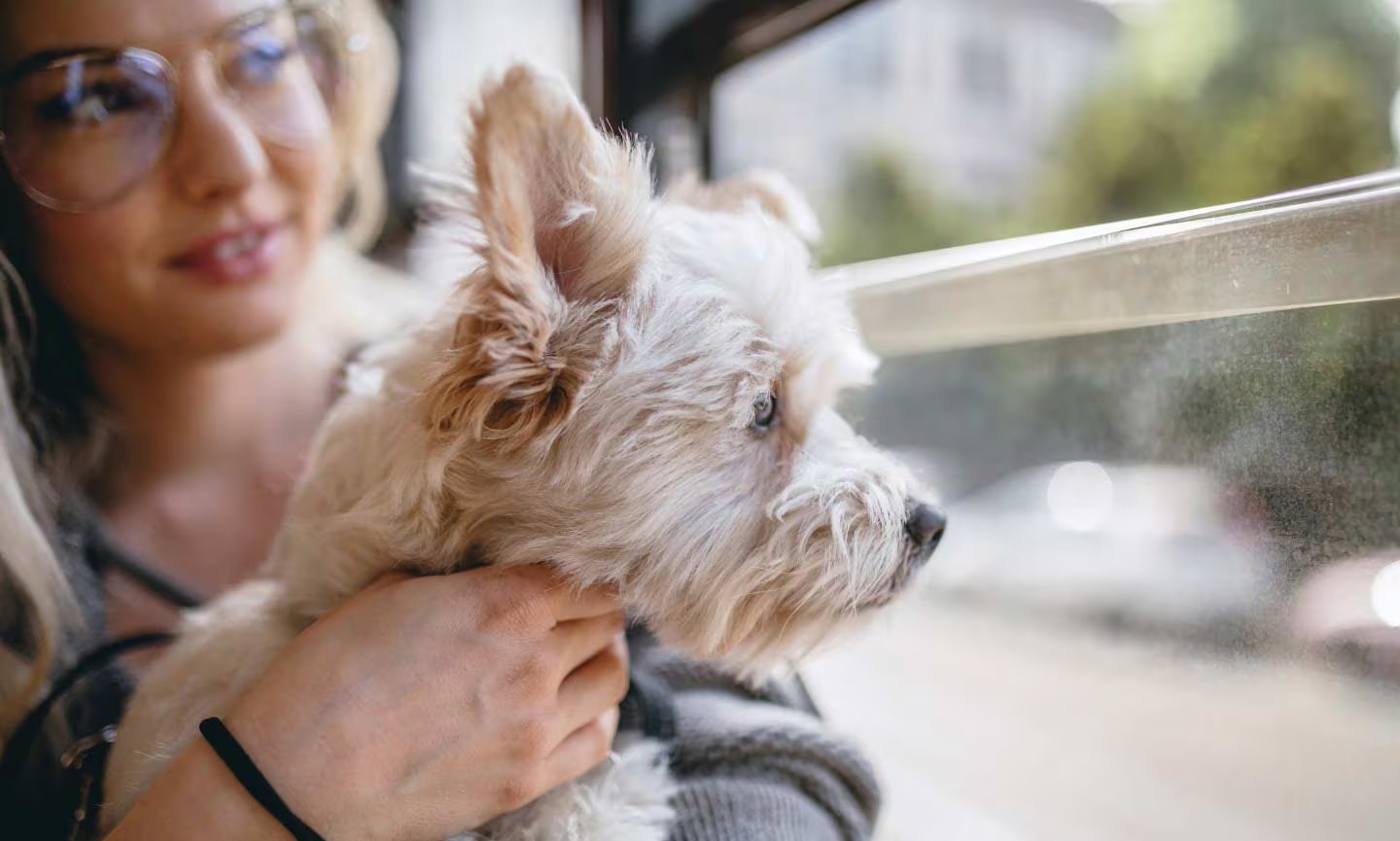
Photo by iStock.com/Pekic
Dogs on Amtrak® Trains
All aboard, train travelers—even furry ones. Amtrak trains allow dogs on most routes, with the following restrictions:
- You must provide a pet carrier, which must be leak-proof and well-ventilated. The maximum size is 19 inches long x 14 inches wide x 10.5 inches high.
- Your dog must be at least 8 weeks old and odorless, harmless, not disruptive, and require no attention during travel.
- The combined weight of your dog and their carrier must be 20 pounds or less.
- You must sign a Pet Release and Indemnification Agreement for each travel segment.
- Your pet must remain inside their carrier while on the train and in train stations.
- Dogs are not allowed in First Class, non-Acela® Business Class, bedroom accommodations, or food service cars.
Recommended Products
Dogs on Greyhound® Buses
There are just two types of dogs you’ll see on a Greyhound bus. One is the dog in the Greyhound logo painted on the side of your vehicle. The other is a trained service dog that’s there to help a disabled passenger. That’s right—apart from service animals, no pets are allowed on Greyhound buses. (Remember: Service animals are different from emotional support animals and therapy animals.)
Local and regional bus services have different pet policies. Ask your bus company about their policy for dogs on board.
Dogs on Boats
Most cruise ships don’t allow pets, including emotional support animals, on board. Cunard® (The Queen Mary 2) is one cruise line that does allow pets. It travels across the Atlantic and has 24 kennels on board, along with space for you and your pup to enjoy. Other major cruise lines, including Royal Caribbean®, Carnival®, and Norwegian Cruise Line®, have policies that allow service dogs on board.
Privately owned boats (including yachts, sailboats, canoes) will have their own rules about pets being allowed on board, so check with the company or owner beforehand.
Regardless of the type of boat, make sure your pet has a life jacket—like the Ruffwear® Float Coat™ Dog Life Jacket—and that there’s an area of the boat where they can be secured, advises Mondrian Contreras, DVM, a veterinarian based in Chicago, Illinois. If possible, familiarize your dog with the boat in advance, and ask your vet about medications to help with motion sickness, just in case your dog experiences nausea while at sea.
Dog-Friendly Hotels and Lodging
Many hotels, resorts, and vacation rentals have dog-friendly policies, but in some places dogs aren’t allowed. Before you book your stay, make sure your pup is welcome, and ask about additional fees you may be charged for bringing them along.
Dog-Friendly Parks, Campgrounds, and Beaches
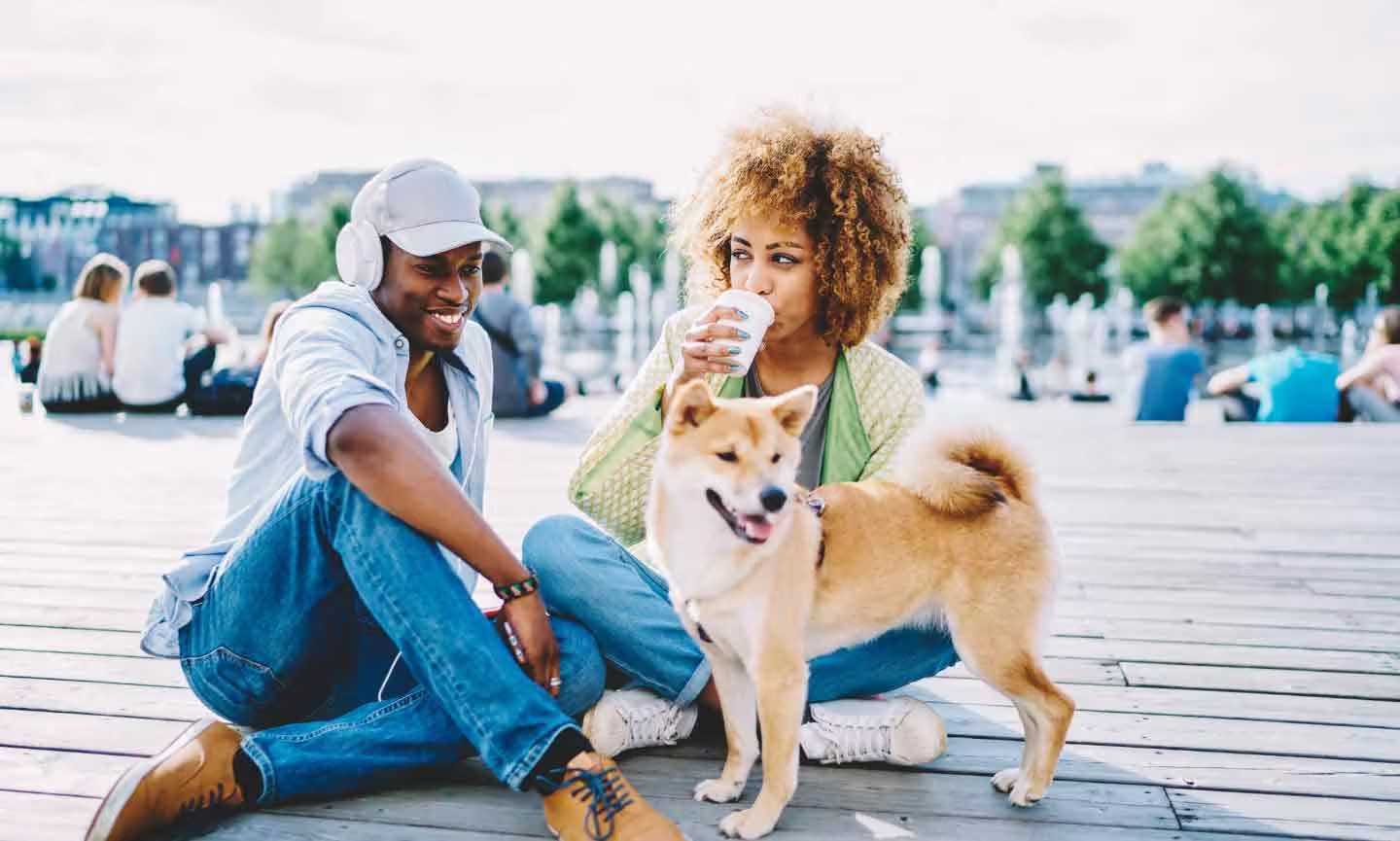
Photo by iStock.com/GaudiLab
Dog-friendly parks, campgrounds, and beaches are fun places to explore while you’re traveling with your pooch. Follow these tips for the best and safest experience.
- Understand the pet policies: Familiarize yourself with the pet policies at the park, campground, or beach. Many places require vaccination and/or spay/neuter information from your veterinarian.
- Follow leash rules: Follow all posted rules about keeping your dog on a leash, cleaning up your pet’s waste, and inappropriate behavior. Following these rules can help keep you, your pet, and others safe during your visit.
- Carry a pet first-aid kit: This can come in clutch in case of injury. The Adventure Medical Kits First Aid Kit for Dogs has everything you need.
- Consider the weather: Only bring your pet to outdoor locations if the weather’s suitable. Extra-cold or very hot conditions can be harmful to your pup, and storms create anxiety in many dogs.
- Bring plenty of water: Keep your dog well hydrated by bringing along water and an easy-to-drink-from vessel, like the Frisco® Silicone Collapsible Travel Bowl with Carabiner.
- Make sure their vaccines are current: “Not all places require the same vaccinations, so keeping your pet up-to-date on the vaccines recommended by your veterinarian, as well as recommended parasite prevention, can help prevent the spread of disease,” Dr. Brejcha says.
Traveling Internationally With Dogs
Traveling with dogs internationally comes with some strict protocols, which vary from country to country. Check animal entry requirements before planning your trip, to see what’s necessary regarding vaccinations and quarantine.
Health certificates completed by a USDA-accredited veterinarian, microchipping, and documented proof of current parasite control are common requirements.
Keep in mind that you’ll also need to meet all the CDC requirements for re-entry into the United States when you return. Requirements vary depending on where you have traveled.
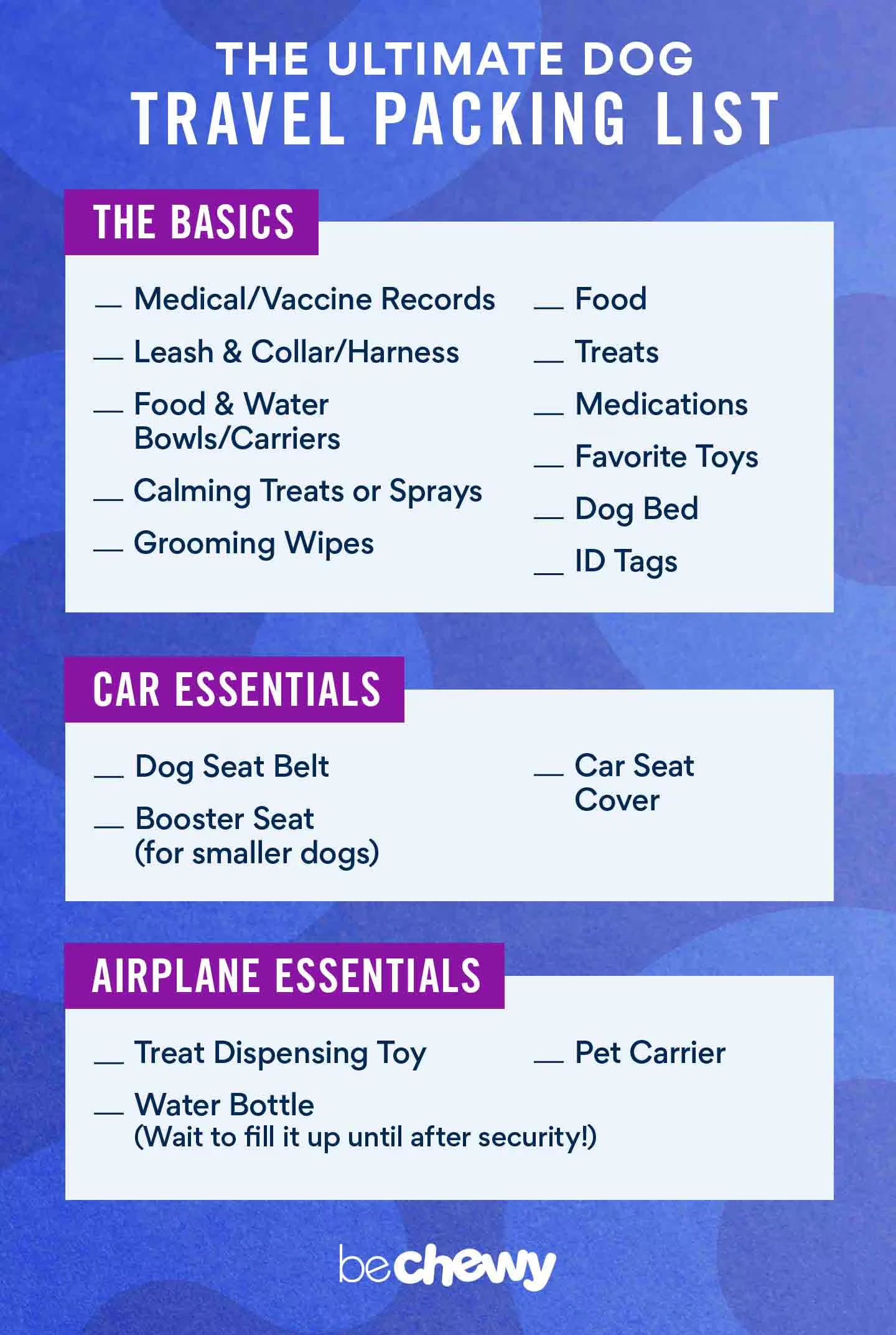
Photo by Chewy
Traveling With Dogs: FAQs
Q: What is the best travel crate for dogs?
When choosing a travel dog crate, consider your dog’s preferences, the weight of the crate, and any airline or train requirements you’ll have to abide by while traveling.
Q: Which airlines allow dogs?
All airlines are federally required to allow service dogs. For other dogs, the rules vary. Consult our guide to domestic airline pet policies, and confirm with your airline before booking your ticket.
Q: How can I help my anxious dog when we travel?
Products like calming sprays, herbal supplements, and compression vests can all ease dogs’ anxiety about traveling. Providing comforting items from home and engaging toys, such as treat dispensers, can also distract them from their stress.
Q: What are the most important things to pack when traveling with my dog?
Carry these items with you (not in your checked luggage) when you travel:
- Dog food (a couple days’ supply) and water
- Your dog’s medications
- Your dog’s medical and vaccine records
- A leash and well-fitted collar or harness
- Treats and toys to entertain them and encourage good behavior
Q: Do dogs like to travel?
Just like humans, some dogs enjoy traveling while others aren’t so fond of the experience. Travel can be stressful for pets, but well-trained, non-anxious dogs with adaptable and curious personalities can find excitement in it.
Q: What are the best dog breeds for traveling?
Traveling with dogs is less about which breeds are most suitable for the adventure and more about which personalities are apt to enjoy it more. Dogs with an easygoing disposition, low stress level, high adaptability, and who are friendly with other people and pets are going to do best when traveling. Well-trained dogs will do better, as well.
Q: How much does it cost to travel with a dog?
The cost of traveling with a dog depends on how you’re traveling, where you’re going, and where you’re staying. Many modes of transportation and hotels require an additional pet fee and/or deposit. You’ll also need to factor in additional supplies, safety equipment, medications, and vaccines/boosters.
This content was medically reviewed by Chewy vets.
